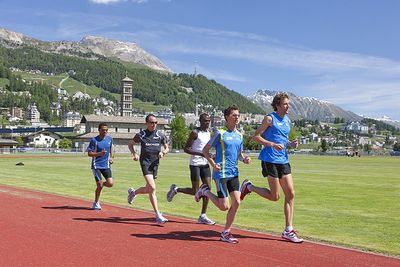Altitude Training
Revision as of 10:50, 26 May 2013 by User:Fellrnr (User talk:Fellrnr | contribs)
Revision as of 10:50, 26 May 2013 by User:Fellrnr (User talk:Fellrnr | contribs)
Training at high altitude has been shown to improve endurance. And high-altitude there is less oxygen available, and this forces adaptations such as increased red blood count and improved muscle metabolism that help with endurance both at altitude and at sea level. Initial Altitude Training Approaches involved living at a high altitude location for some time, and this approach is still used by many of the athletes. However, this is expensive and impractical for many people, so various altitude simulation approaches have been developed. Most of these approaches reduce the oxygen content of normal pressure air at low altitude. Altitude training can have a number of benefits, depending on the Altitude Training Technique used:
- Increased number of red blood cells, which improves the oxygen carrying capacity of the blood and therefore V̇O2max.
- Improved efficiency in oxygen usage (mitochondrial respiration).
- Greater resistance to free radicals through improved anti-oxidant defenses.
- Adaption in Breathing patterns at altitude.
- A shift from Protein to fat as an energy source.
See Also
- Altitude Training Approaches
- Comparison of Altitude Training Systems
- AltoLab
- The Science of Altitude Training
- Book Review of Altitude Training and Athletic Performance
- Intermittent Hypoxic Exposure and The Science of Intermittent Hypoxic Exposure
- Chronic Mountain Sickness
- Viagra, Exercise and Altitude
